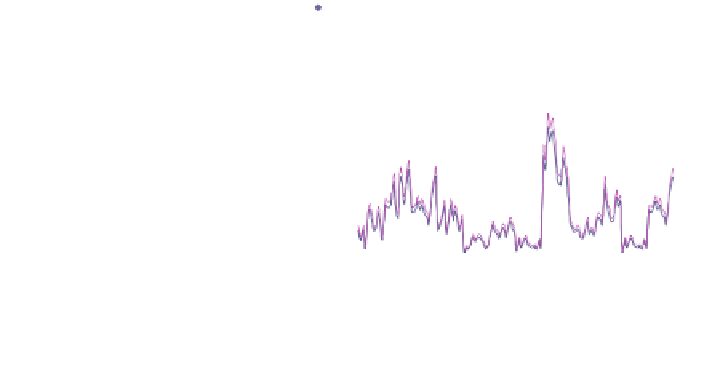Environmental Engineering Reference
In-Depth Information
Fig. 5.11 Comparison
between BOD prediction and
actual BOD data, considering
TN as input data
140
120
100
80
60
40
20
0
1993
1995
1998
2001
2004
2006
YEAR
Series 1(actual data)
Series 2(predicted data)
Fig. 5.12 Comparison
between BOD prediction and
actual BOD data, considering
TP as input data
140
120
100
80
60
40
20
0
1993
1995
1998
2001
2004
2006
YEAR
Series 1(actual data)
Series 2(predicted data)
TP parameter was found to have marginally less error than TN when used as an
input for the MLP model. This may present that TP parameter may have a greater
role to play than TN in generating pollution (BOD) in the wetland. This can be
proved by applying sensitively analyze.
5.4.1.1 Comment
As a general, MLP neural network is a suitable tool for analyzing surface water
quality and comment related to mentioned case study is as follows:
In the testing model, with 13 neurons in the hidden layer, when TP was used as
an input parameter to the MLP model for prediction of the BOD, the error was
8.32 % which was less than the error obtained with TN as the input. This may
describe that TP is more influential in producing pollution (BOD) than TN. This
was also the minimum error in this study. Also, the correlation coef
cients in
training, testing and total were 0.981, 0.964 and 0.974 respectively, which shows
reasonable conformity between real BOD parameter data and the model predictions.









































































































Search WWH ::

Custom Search